Shoulder Blanket Item Number: E20805-0 from the National Museum of Natural History
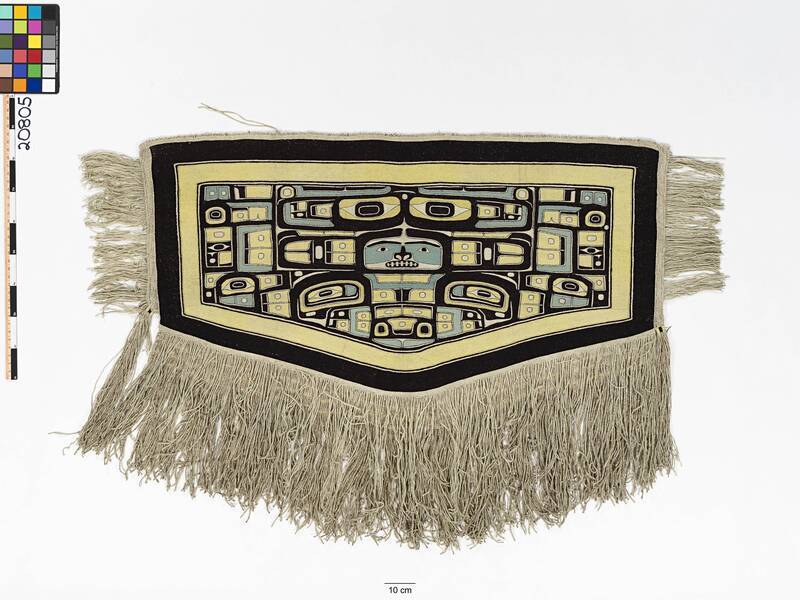
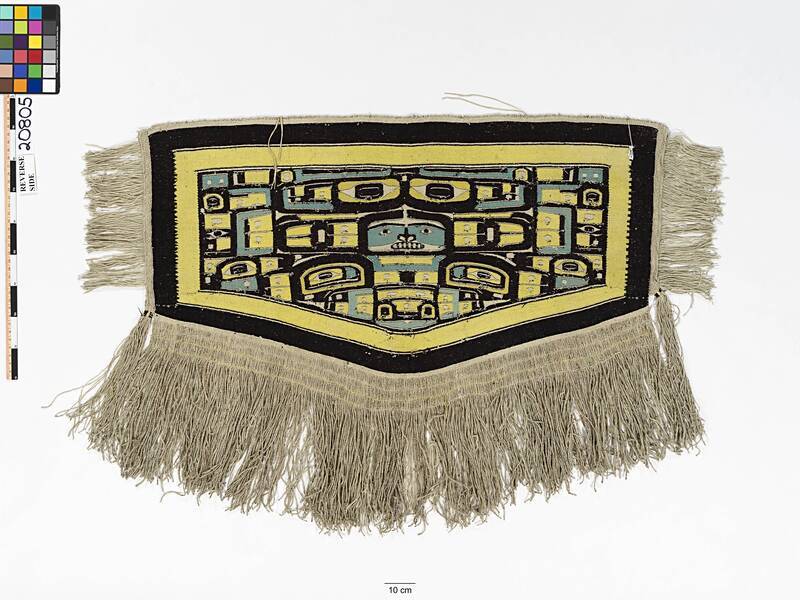
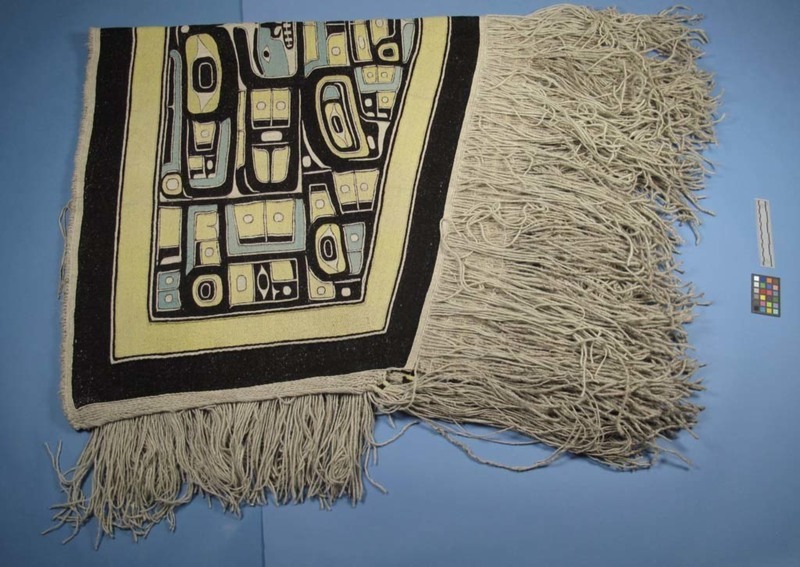
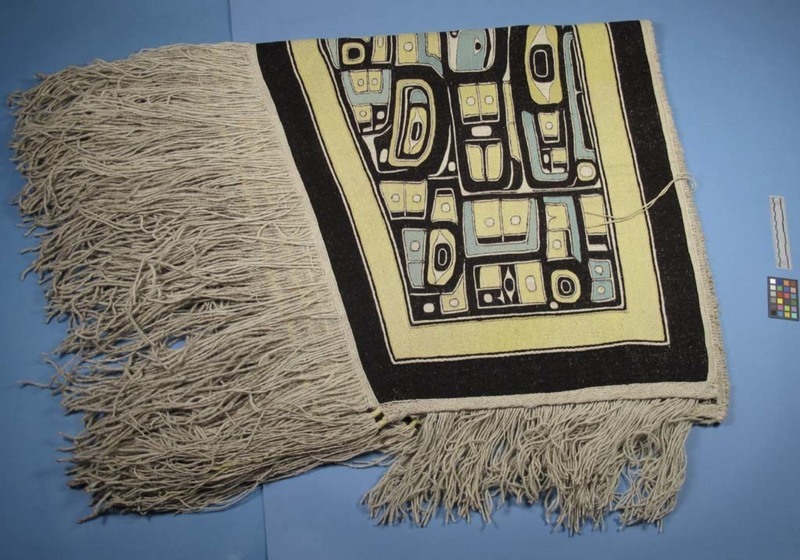

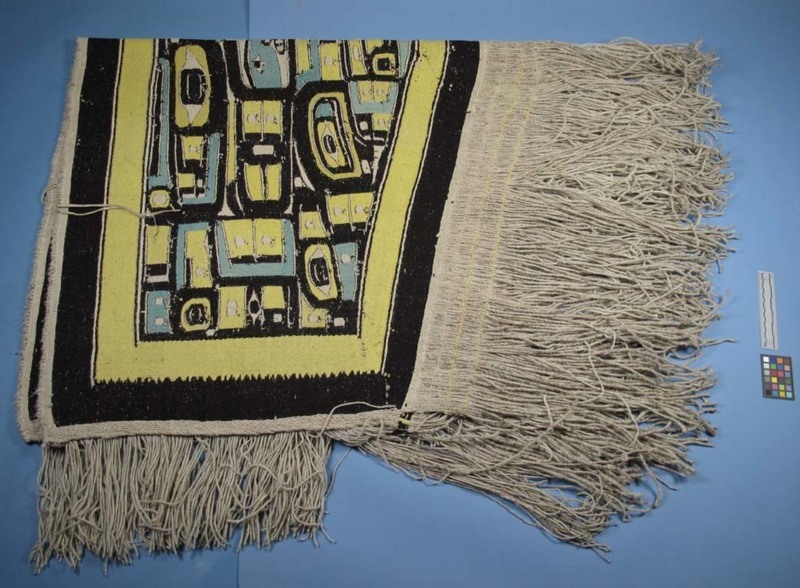
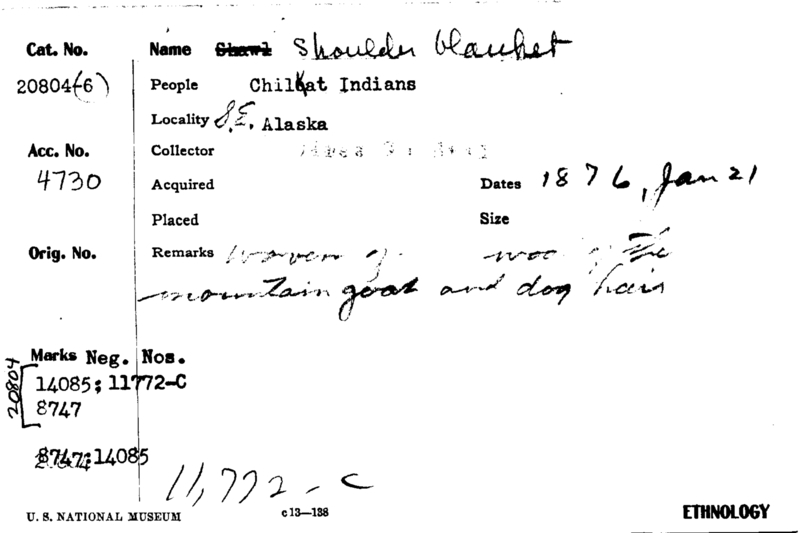
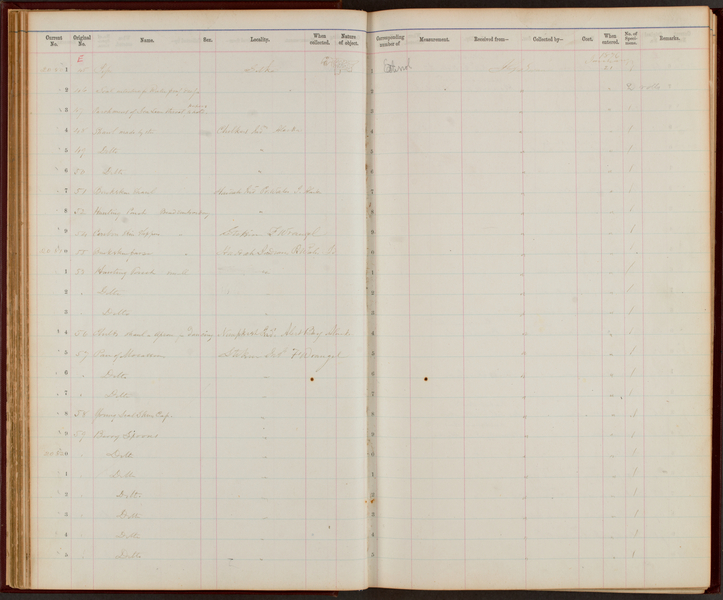
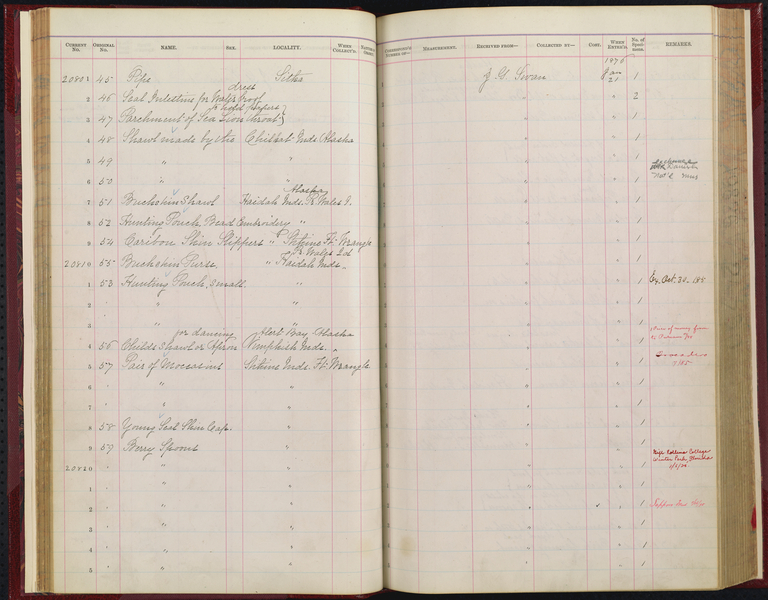
Notes
FROM CARD: "20804-6. WOVEN OF WOOL OF THE MOUNTAIN GOAT AND DOG HAIR [sic]." THIS ARTIFACT WAS LENT (UNDER INCORRECT CATALOGUE NUMBER OF 219504) TO CROSSROADS SEP 22, 1988. LOAN RETURNED JAN 21, 1993. ILLUS: CROSSROADS OF CONTINENTS CATALOGUE, FIG. 281, P. 216." FROM CROSSROADS CATALOGUE: "THE MOST PRESTIGIOUS ROBE OF NORTHWEST COAST INDIAN NOBILITY IN THE 19TH CENTURY WAS THE CHILKAT BLANKET. HIGHLY STYLIZED DESIGNS IN DYED MOUNTAIN GOAT WOOL WERE WOVEN INTO THE TEXTILE, THE WARP OF WHICH WAS WOOL WITH A CEDAR BARK CORE. HERE THE CENTRAL PANEL REPRESENTS THE KILLER WHALE. THE CREATURE'S HEAD IS AT THE BOTTOM, THE TAIL AT THE TOP, AND THE TWO SIDES OF THE DORSAL FIN EXTEND OUTWARD FROM THE CENTRAL FACE, WHICH REPRESENTS THE BLOWHOLE. THE BOTTOM FRINGES OF THE BLANKET ARE NEARLY AS LONG AS THE HEIGHT OF THE WOVEN PANEL." Illus. Fig. 437, p. 198, and Fig. 438, p. 199, in The Chilkat Dancing Blanket, by Cheryl Samuel, University of Oklahoma Press, 1982. Blanket 20805 is similar (same?) design to the one Illus. Fig. 572a, p. 382, in "The Chilkat Blanket" by George T. Emmons, Memoirs of the American Museum of Natural History, Vol. 3, part 4, 1907. There is a photo of this object on display in the Smithsonian Bureau of American Ethnology exhibits at the Louisiana Purchase Exposition, St. Louis, Missouri, 1904, USNM Negative No. 16465. See Smithsonian Institution Archives, Record Unit 95, Box 62B, Folder 12, Image No. SIA_000095_B62B_F12_010 .Per Repatriation Office research, as reported in the Tlingit case report (Hollinger et al. 2005), in 1875 James Swan purchased this dancing blanket of the type commonly known as a Chilkat blanket from an unknown person probably in Wrangell, Alaska.Florence Sheakley, elder, and Shgen George, weaver, made the following comments during the Tlingit Recovering Voices Community Research Visit, March 13-March 24, 2017. This blanket still has it's ties so it could be worn. This object is not made with woolly dog hair, but rather mountain goat guard hairs. The hairs are stiff and thick, which makes them hair and not wool.
Item History
- Made in Fort Wrangell, Wrangell Island, Alaska, USA
- Collected by James G. Swan in Fort Wrangell, Wrangell Island, Alaska, USA during 1875
- Received during 1876
What
- Name
- Shoulder Blanket
- Identification Number
- E20805-0
- Type of Item
- blanket
Who
- Culture
- Tlingit and Chilkat
- Field Collector
- James G. Swan
Where
- Holding Institution
- National Museum of Natural History
- Made in
- Fort Wrangell, Wrangell Island, Alaska, USA
- Collected in
- Fort Wrangell, Wrangell Island, Alaska, USA
When
- Collection Date
- during 1875
- Acquisition Date
- during 1876
Other
- Accession Number
- 004730